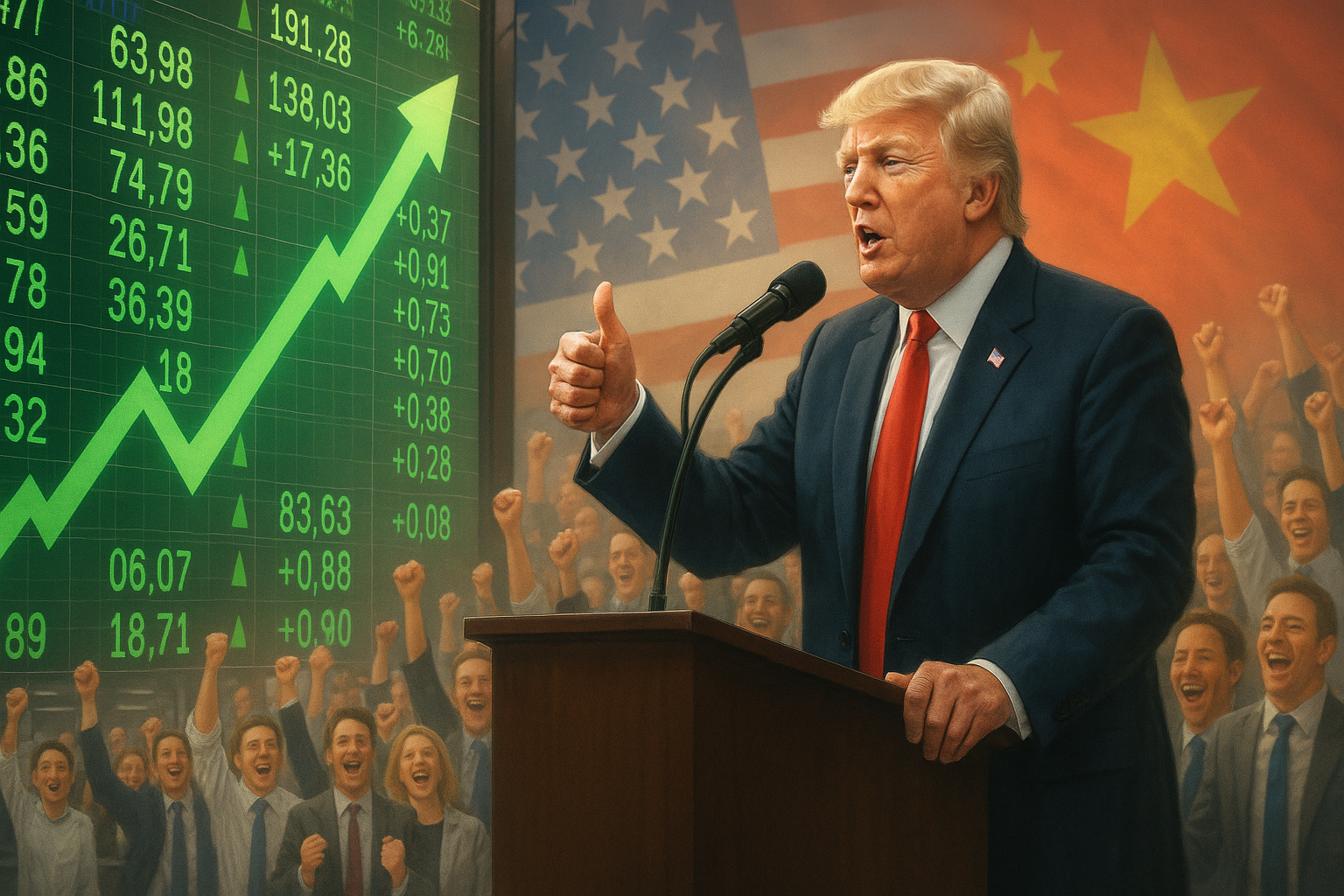The markets breathed a collective sigh of relief Tuesday after Donald Trump took to social media with an unexpectedly gentle tone toward China. "Don't worry about China, it will all be fine!" the president-elect declared in his signature all-caps style, sending investors scrambling to buy stocks they'd been dumping in anticipation of economic warfare.
It was quite the turnaround.
Just weeks ago, Trump was thundering about slapping 60% tariffs on Chinese goods. After his election victory, he doubled down on those threats. Now, suddenly, we're getting the "highly respected President Xi just had a bad moment" version of Trump, who apparently doesn't want to trigger a "Depression for his country."
I've been covering Trump's economic messaging since 2016, and this pivot isn't exactly shocking. The pattern feels familiar—extreme threat followed by moderation once market consequences become visible. You might call it the Trump Trade Tango: two steps toward protectionism, one step back toward pragmatism.
What's remarkable here isn't just the policy whiplash (though that's certainly something to behold). It's how efficiently Wall Street processed this information. The S&P 500 jumped more than 1%, with China-exposed companies like Apple performing even better. Traders are essentially saying they believe in what some analysts have dubbed the "TACO trade"—"Trump Administration Capitulation Opportunity"—more than they believe in the protectionist rhetoric.
Look, we've seen this movie before. During his first term, Trump's "maximum pressure" campaigns typically ended with modest deals that he'd present as historic victories. Remember the USMCA? It was essentially NAFTA with some tweaks, but the rollout made it sound like he'd reinvented international commerce.
The thing that fascinates me about Trump's economic approach is what I think of as his "applause-o-meter policy framework." He seems to gauge success by immediate reception—especially from markets and core supporters. When stocks tank on his tariff threats, he eventually moderates. When they soar on tax cuts, he doubles down on those policies.
But what happens when these impulses clash? (And they inevitably do.)
His base loves tough-on-China talk, but they also love watching their retirement accounts grow. In these conflicts, the stock market has typically won out... which must be driving China hawks like Robert Lighthizer and Marco Rubio absolutely nuts right about now.
The bond market's reaction tells its own interesting story. Treasury yields declined on Trump's softer stance, suggesting investors see reduced inflation risk without aggressive tariffs. This creates a coherent market narrative: stocks up because trade war risk is down, bonds rallying because inflation fears are easing.
I spoke with several investment managers yesterday who expressed cautious optimism but emphasized we're still dealing with tremendous uncertainty. "One social media post doesn't constitute a coherent trade policy," as one portfolio manager at a major hedge fund put it to me (requesting anonymity to speak frankly about political matters).
For companies that have already announced reshoring initiatives based on anticipated tariff regimes, this creates a real dilemma. Has Intel overplayed its hand with massive domestic chip manufacturing investments? What about TSMC's Arizona plants? The profitability of these multi-billion dollar projects looks quite different depending on what trade policy actually materializes.
Even if Trump does eventually implement significant tariffs—and that's still entirely possible—today's message hints that there'll be plenty of off-ramps and carve-outs. In that environment, connections and lobbying might matter more than comparative advantage. Not exactly the free market at work, but perhaps a more navigable landscape than all-out trade war.
We're still weeks from the inauguration. Cabinet positions remain unfilled. Policy details are scarce. But Tuesday's market action suggests investors believe the bark of Trump's trade rhetoric will prove worse than its bite.
Whether that's wishful thinking or savvy analysis is the multi-trillion dollar question hanging over global markets.
